Lecture

In sorrow, suffering is experienced "subduedly." You do not scream at the top of your voice, but relive your unhappiness more calmly. Anything can plunge you into a sad state, but most of the time you are sad about your losses. Losses caused by death or rejected love. Loss of opportunities or benefits as a result of their own mistakes, unforeseen circumstances or neglect of other people. Loss of health or injury caused by illness or accident. Sadness is rarely transient. It usually lasts from several minutes, several hours to several days and even years.
Sadness is passive. Darwin wrote that sad people do not want to act, remain motionless, sometimes they can swing back and forth. The circulation becomes sluggish, the face is pale, the muscles are flabby, the eyelids are lowered; head hangs on a constrained chest; lips, cheeks and lower jaw droop under its own gravity [2] .
In sorrow, you suffer. This suffering is not caused by physical pain, but by loss, disappointment, or a sense of hopelessness. The suffering of a grieved person can be very strong, but in its extremely acute form it is more easily tolerated than the suffering caused by fear. You may experience sadness for a long time and stay alive and healthy.
Sadness is a variation of grief, which is the most common negative emotion. Grief is most often caused by physical pain. Grief can also be caused by bereavement. In sorrow, you suffer, but your suffering is expressed loudly, not quietly; you sob, not silently swallow tears. Here there is more activity than passivity. In grief, you are trying to cope with what has plunged you into this state. Your efforts may involve the targeted elimination of the source of grief. But often the efforts are useless, because you can not eliminate it (for example, shedding tears at the death of a loved one). Sadness often follows grief if it is prolonged or if efforts to eliminate the source of grief do not produce results. As the grief subsides, sobs subside, the activity of the person decreases, and the suffering gradually becomes silent. Often, one's own memory or one's actions can revive the grief experienced, and then the cycle repeats: sadness comes to replace the loud wailing. The word sadness can also be used in cases where grief is purposefully controlled: when loud, active forms of grief are not visible and only more socially acceptable signs of grief appear.
If your child has just been killed by a car, then your immediate reaction to this will not be sadness. You will experience grief or perhaps shock or anger combined with grief. Sadness will come later, in a few hours or even days, when you will continue to suffer because of the loss suffered, but stop crying and screaming for at least a period of time. In grief, there is more protest against loss; in sorrow, you accept your loss. Grief is based on the cause of your feelings, such as the death of a loved one, and not the feeling itself - grief or sadness. Usually, grief is replaced by either disbelief or sadness, then a person can again experience grief when a new memory of the dead or a new detail about his death occurs - this cycle can be repeated again and again. Over time, all this can only be sadness, which will last for several months or years.
In a romantic relationship, the pattern of experiencing rejected love looks the same. The rejected lover first experiences grief. He may shout and protest, show despair or anger. Sadness comes later and may be replaced by disbelief in the possibility of a final break and repetition of the entire cycle of suffering. If a rejected lover does not show his grief (does not scream and does not go into a riot), you can decide that he knows how to keep himself in his hands, or does not care much about a lost loved one, or demonstrates the stereotype of the “real man”. In accordance with this stereotype, men should not show their grief in public (even during a funeral) - only manifestation of sadness is allowed. It is believed that it is necessary to suppress sobs, control gestures and harsh words, but they can complement anger. Although people often experience anger in grief and sadness, grief is often masked by anger. Interestingly, while social conventions forbid men to openly manifest their grief and instead allow them to show anger, the very opposite behavior is prescribed to women. Women who conform to the stereotypical notions of “femininity” should not openly show anger, should not direct it towards people, but instead, on the contrary, turn it towards themselves or show grief, tears or bad mood.
When sadness arises from controlled grief, it appears outwardly just as sadness arises after openly manifested grief, but the experience of experiencing such sadness is likely to be different. When you control your grief, your face may look sad, but the experience you get, the awareness of the events that have taken place, your sensations, images, memories and worries - all this changes because of the need to control behavior. This is not perceived at all as if you used to sob from grief, and then began to experience the grief that came to replace you.
Sadness varies in intensity: from slight despondency to the ultimate degree of manifestation — grief. By its strength, sadness is not necessarily inferior to sorrow; the intensity of these feelings may be different. Since sadness is calmer, quieter, less messy and aggressive than grief, it is easier for others to be in the presence of a person who experiences grief, not grief. But a person may feel worse in sorrow than in sorrow, because he understands his loss and the sufferings better and can reflect more on their consequences.
Sadness can be combined with any of the emotions, but more often it is combined with anger and fear. The death of a loved one can cause anger along with grief and sadness: anger at the forces responsible for this death, anger at the loved one because he died, anger at himself for his vulnerability. As already mentioned, anger can be exaggerated or simulated to disguise a sad or sad expression. If you know that your foot should be amputated, you may experience fear of danger or physical pain, as well as grief or sadness about losing your limb. Sadness can be combined with disgust and manifest as disappointment and disgust or haughty neglect. Sadness can also be combined with joy and manifested as a bitter-sweet feeling or sentimental melancholy.
Some people take pleasure in sadness. Someone may strive to live with other people's sorrows - like those who seek to experience the pseudo-islands on a roller coaster. Someone deliberately plunges himself into a state of sadness or is looking for an opportunity to cry while watching movies or reading novels called "tear squeezing." Someone never shows his grief and considers sadness (even someone else's) harmful. Such people are considered dry, insensitive and unable to take to heart the suffering and death of others.
Here we decided to focus on sadness, since the outward manifestation of grief is more obvious (it is easier to recognize, it is usually accompanied by crying). The situation is different with sadness. Sometimes on the face of a person there can be no indication of even a very deep sadness, except for the general loss of muscle tone. Such expressions of sadness cannot be shown in photos. When sadness is not too strong and when a person is in a state of transition from grief to grief, characteristic symptoms appear on the face. The facial expressions that we show on this page to demonstrate such manifestations of sadness can also be observed in people experiencing shallow grief or grief in its initial phase.
There are characteristic manifestations of sadness in each of the three areas of the face. The inner corners of the eyebrows are raised and can be slightly reduced. The inner corners of the upper eyelids are pulled up, and the lower eyelids may appear raised. The corners of the lips are lowered or the lips may look trembling.
Picture 1

The inner corners of the eyebrows are raised and can be brought together. In fig. 1 sad eyebrows were added to the neutral faces of John and Patricia - forehead (photos on the left) and, for comparison, scared eyebrows - forehead (photos on the right). Note that John's inner corners of his eyebrows are raised (1), thus expressing sadness; otherwise, the eyebrows themselves (and not just their corners) look raised and brought together, when the eyebrows - John's forehead express fear. Although the photographs of Patricia reflect the same differences in the movements of the facial muscles, their result is much less obvious. There are two ways to see that the same thing happened with eyebrows — the forehead of Patricia and John. Take a look at the configuration of the skin areas under Patricia's eyebrows in fig. 1C and compare with the configuration of the same skin areas in Fig. 1D. You see that the triangular shape in the case of sad eyebrows (2) is absent in a fright situation; This result is due to the contraction of the muscles that tighten the inner corners of the eyebrows upwards. You can see the same effect on John's photo. Another way to see the feature of Patricia’s sad eyebrows is to compare the general impressions of her face, shown in the right and left pictures. The face on the left creates a general impression of mild sadness, and the face on the right gives a slight concern, even though both photos are composite and differ only in eyebrows - forehead. The same differences appear even more obvious in John’s photographs in pic. one.
Images of sad eyebrows - forehead on fig. 1 also allow you to see the sad upper eyelids. We could not show sad eyebrows — a forehead without upper eyelids, because the muscular contractions that affect the eyebrows when expressing this emotion also change the position of the inner corners of the upper eyelids. On the sad faces of John and Patricia, the upper eyelids are pulled up behind the inner corners or upper edges.
Usually sad eyebrows - the forehead (and upper eyelids) are complemented by sad lower eyelids and sad lower part of the face. But this is not always the case. When sad eyelids - the forehead appear on a neutral face, the general expression of the face may mean that a person is slightly saddened or controls the manifestation of a stronger sadness. Such brows - forehead can quickly appear and disappear during a conversation, then it can mean an emphasis on some phrase or word. This is an alternative to using raised eyebrows (Surprise page, Fig. 1).  or lowered eyebrows (page "Anger", Fig. 1).
or lowered eyebrows (page "Anger", Fig. 1).  ), and can also be used as “punctuation marks”.
), and can also be used as “punctuation marks”.

Figure 2
Persons in fig. 2 differ from the sad faces in fig. 1 only by the fact that the sad lower eyelids in fig. 1 were replaced by neutral. Raised lower eyelids enhance the transmitted expression of sadness. In fig. 2 Patricia looks more sad than in pic. 1C, even though the difference is only in the lower eyelids.
John's pic. 2 not only the sad lower eyelids, but also his gaze directed slightly downwards. Often, a grieved person has his gaze downward, rather than directly in front of him, especially if a feeling of shame or guilt is mixed with his sadness. When the mouth is neutral, the face still retains signs of controlling emotions - as in these two photographs, but sadness is more pronounced here than in fig. one.
Figure 3
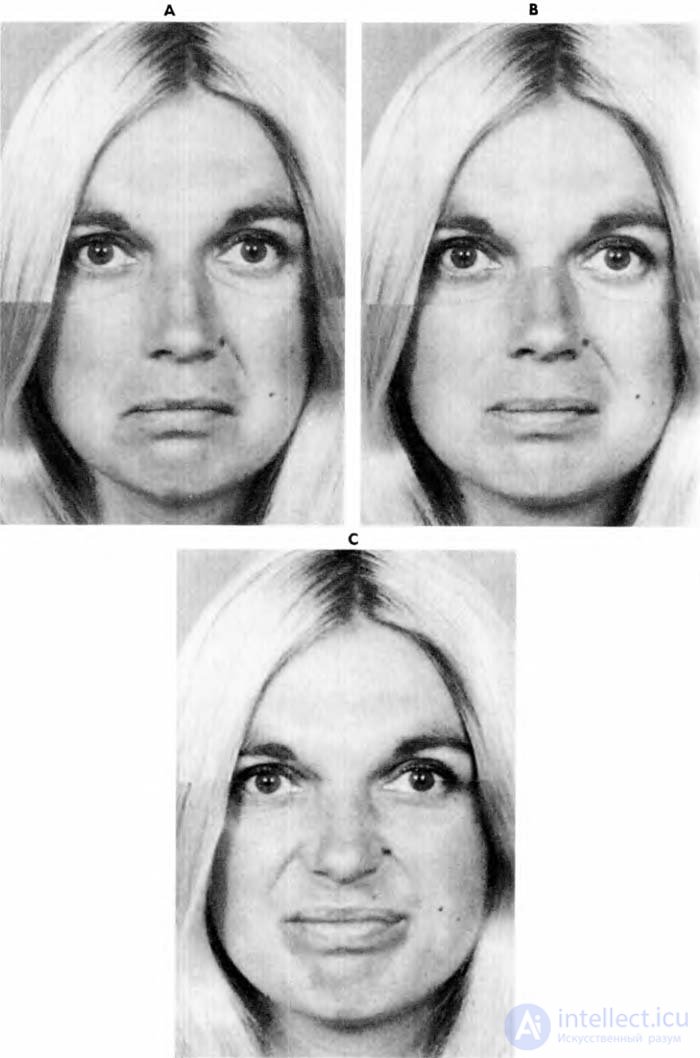
In fig. 3A and fig. 3B in Patricia, we see two different sad mouths. The mouth, which is most often confused with the sad, namely, expressing simultaneously disgust and contempt, is shown in Fig. 3c. In all three photographs, Patricia has neutral eyes and eyebrows - forehead. In fig. 3A, the corners of her mouth are lowered in fig. 3B she has a relaxed mouth, which is typical for a person whose lips are quivering and ready to burst into tears, or if the person is trying to control his sobs. A mouth that expresses disgust and contempt is shown in fig. 3C, and you can see its difference from the mouth, expressing sadness.
When sadness is demonstrated only by the mouth (without involvement of the eyelids or the forehead), the facial expression becomes ambiguous. The situation is different with all other emotions (emotions of joy, surprise, fear, disgust, shown only by mouth, give unambiguous expressions to the face). The face in fig. 3A may complain, but this is not certain. The face shown in fig. 3B has an even more ambiguous expression: moderate grief, neglect, or something else.
Figure 4

In fig. 4 Patricia’s sorrow is expressed in all three areas of the face, and in each case we see a sad mouth. Both faces in pic. 4 express moderate sadness. Weaker sadness is transmitted through the weaker involvement of different areas of the face. The weakest sadness is shown in fig. 1C. The next most powerful expression of sadness is shown in fig. 2A. An expression of even more sadness, shown in fig. 4 is also quite possible, but it must be complemented by tears and trembling of the lips — which we cannot show in a static photo. Even stronger sadness can be expressed on the detached face with a significant weakening of muscle tone.
Figure 5

In fig. 5 John and Patricia show a mixed expression of sadness (eyebrows - eyelids) and fear (mouth). It can occur if Patricia, for example, saddened by a natural disaster, as a result of which she lost her home, learns that all residents should be urgently evacuated due to the approach of a new danger; in this case, fear or fear for one’s fate may be mingled with sadness. Persons as in fig. 5 may also occur in people who are grieving, but silently, without crying, suffer physical pain or are ready to suffer it in the near future. Soon after the appearance of such a facial expression in a person, one can well expect crying and bitter exclamations.
Figure 6

In fig. 6 shows a combination of sadness (mouth) and anger (eyebrows — forehead and eyes — eyelids), and for comparison, expressions of anger are shown on the entire face (Fig. 6A) and sadness (Fig. 6B). Such a facial expression could appear, for example, in the case when Patricia would approach an inattentive driver who had just knocked down her dog. Saddened by the death of a beloved animal and angry at the driver for his carelessness, she can reflect on the face a combination of these two senses. Or Patricia could hear offensive words from her mother. Feeling sadness at the same time because of the temporary loss of good relations and anger at her mother, she can express both of these feelings in the form of gloomy irritation or discontent. In fig. 7C John shows a different type of combination of sadness (eyebrows - eyes) with anger (mouth). For comparison, in Fig. 7A shows the expression of anger over the entire face, and fig. 7b is an expression of sadness on the whole face. This mixture of sadness and anger most often occurs when trying to mask or control sadness with an angry mouth. Or it may be a regretful, but determined face. However, John’s attempts to disguise his sadness are not too convincing: he literally demonstrates an “inflexible” upper lip.
Figure 7
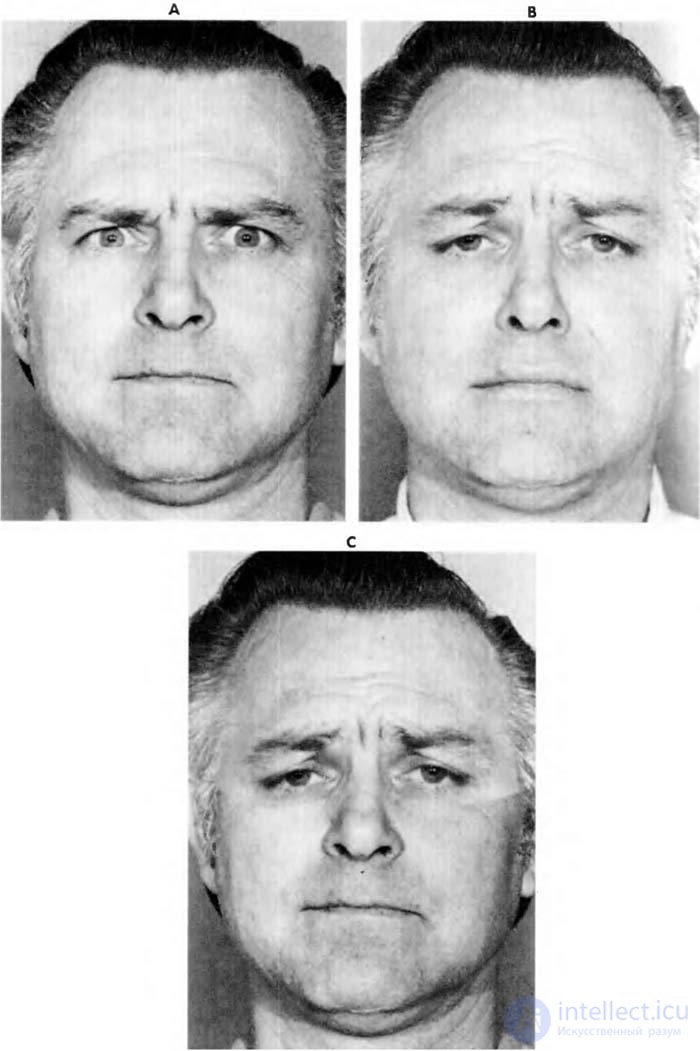
Figure 8 gives two examples of mixed expressions of sadness (eyebrows — forehead and eyes) and aversion (mouth and lower eyelids). Looking at the battlefield, John might have experienced the sadness caused by the memories of the dead and his aversion to humanity, which allowed such a meaningless slaughter.
Figure 8

In fig. 9 shows two mixed expressions of sadness (eyebrows - forehead) and joys (mouth). On the face of Patricia, eyelids express sadness; on John's face, the upper eyelids express sadness, and the lower eyelids - joy. Such facial expressions can occur in the case of nostalgic, bitter-sweet experiences, or when the expression of joy is used as a mask - “I laugh in public, I cry to myself, because I still love you”. Or when someone says: “Cheer up, not everything is so bad; let everyone see you smiling. ”
Figure 9

In fig. 10 shows faces expressing sadness in all three areas. Pay attention to the distinctive features of the manifestation of sadness.

Figure 10
Re-read the instructions on the fear page. Now you can add to your list joyful and sad faces and faces expressing a combination of joy or sadness with anger, disgust, fear and surprise. First, practice with faces expressing joy, sadness, and combinations of these two emotions. When you feel confident, add photos of people expressing anger, disgust, fear and surprise with whom you have worked before. Practice until you get unmistakable answers.
 |
Easy joy |
 |
Moderate joy |
 |
Moderate to strong joy |
 |
Moderate joy |
 |
Moderate joy |
 |
Easy joy |
 |
The combination of joy and surprise |
 |
The combination of joy and contempt |
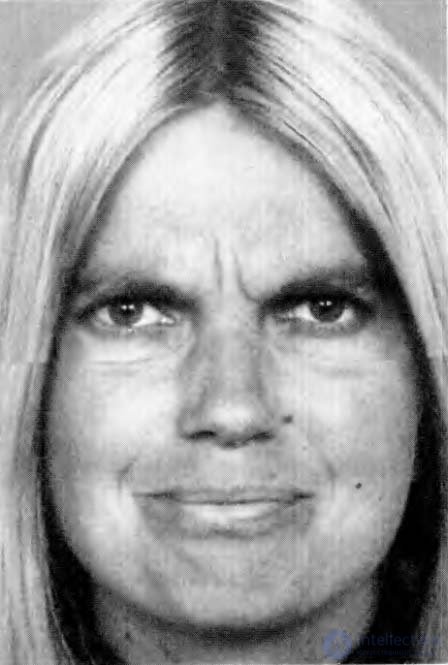 |
Combination of joy and anger |
 |
Combination of joy and anger |
 |
Mild to moderate grief |
 |
Sadness over all face |
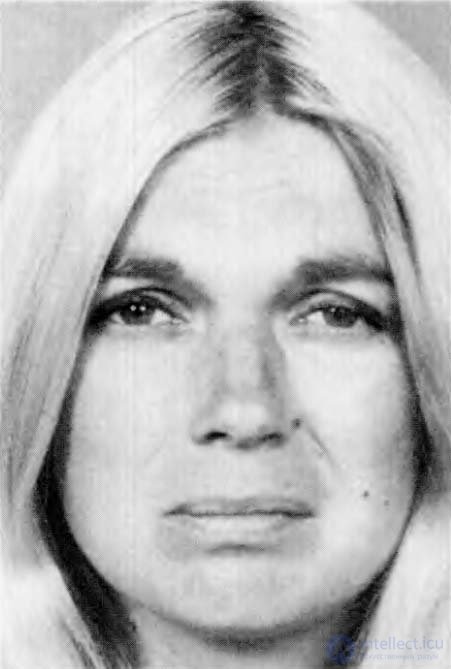 |
Sadness over all face |
 |
Combination of sadness and fear |
 |
Combination of sadness and fear |
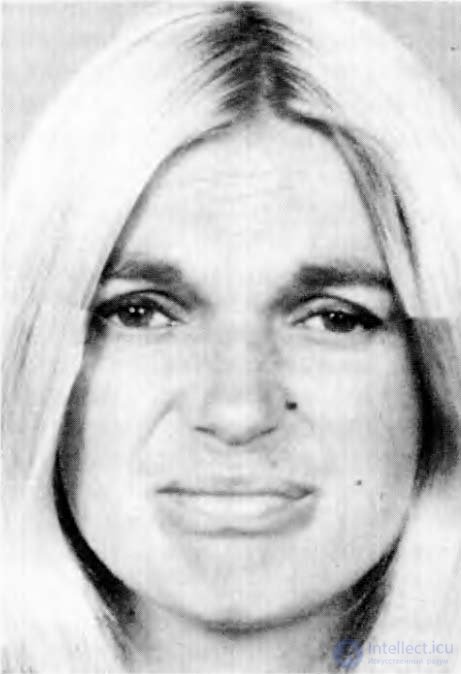 |
The combination of sadness and disgust |
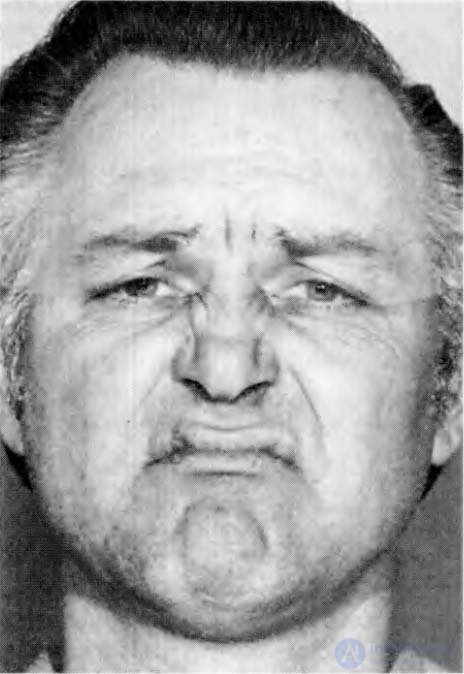 |
The combination of sadness and disgust |
 |
The combination of joy and sorrow |
 |
The combination of joy and sorrow |
Comments
To leave a comment
Psychology of emotions
Terms: Psychology of emotions